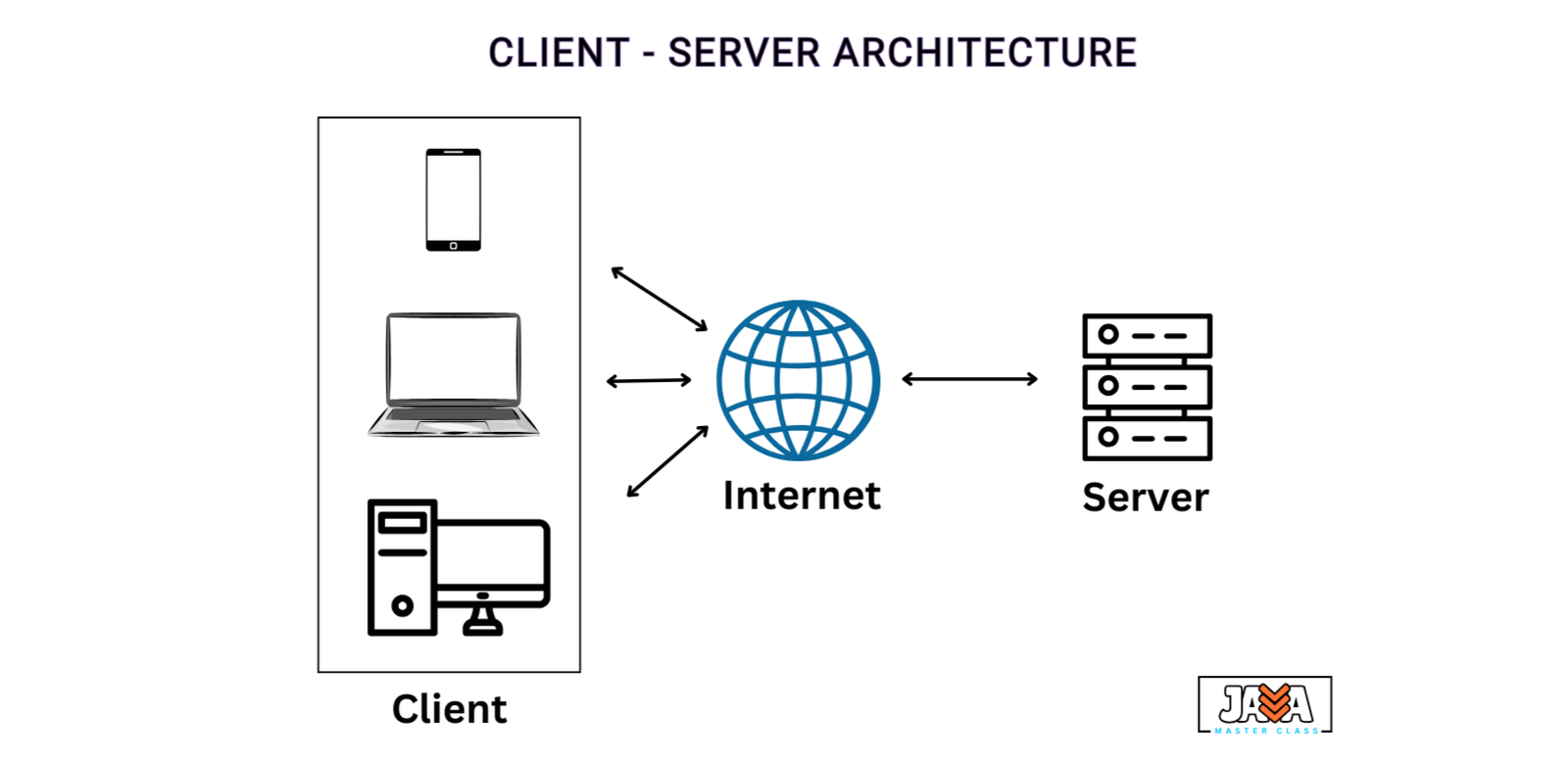At the heart of every web application lies the Client-Server Model, a foundational concept that explains how devices communicate over the internet to deliver web experiences. Whether we’re booking tickets, checking social media, or reading this article, we’re interacting with this model!

Client-Server Model
The Client-Server Model is an architectural approach where two main components: the client and the server, work together to enable communication over a network (usually the internet).
- The Client is the frontend or user interface, typically our web browser (Chrome, Safari, or Firefox) or mobile apps. It initiates communication by sending a request.
- The Server is a powerful machine or system running in the background that processes incoming client requests, performs business logic, interacts with databases, and sends back responses.
In simple terms, Client asks for something → Server handles it → Client gets a response.
Working of Client-Server Model
- User Interaction: A user interacts with the client (e.g., types a URL or clicks a button on a webpage).
- Request Sent: The client sends a request (usually an HTTP request) to the server. This could be asking for an HTML page, submitting form data, or fetching dynamic content like product listings.
- Server Processes: The server receives the request, processes it (this might involve running Java code, querying a database, or applying business rules), and prepares a response.
- Response Sent: The server sends back a response (usually an HTTP response) that contains data like HTML, JSON, images, or files.
- Render to User: The client (browser) processes this response and displays the result to the user – a web page, message, or any other interface.
Role of Java Web Development
In Java Web Development, the server-side application is typically written using Java technologies. For example:
- Servlets: Java classes that handle requests and responses.
- JSP (JavaServer Pages): Used to generate dynamic HTML content.
- Frameworks like Spring Boot: Help in creating robust and scalable web applications by managing dependencies, handling requests, and simplifying development.
When we build a Java web application, we’re essentially writing code that lives on the server to handle client requests.
Importance of Client-Server Model
- Separation of Concerns: The client focuses on user interface and experience, while the server handles data processing and logic.
- Scalability: This model allows multiple clients to interact with a centralized server. Think of how millions of users can access the same website simultaneously.
- Security: Sensitive business logic and data remain on the server, where they can be better protected.
- Flexibility: Clients can be web browsers, mobile apps, or even other servers — all interacting with the server using standard protocols like HTTP.
Real-Life Analogy
Think of it like mailing a letter.
- You (Client): Write a letter (the request) asking for information.
- Post Office (Network/HTTP): Delivers your letter to the recipient.
- Recipient (Server): Reads your letter, gathers the information you requested, and writes a reply (the response).
- Post Office delivers the response letter back to you.
- You (Client) open the response and read the information.
